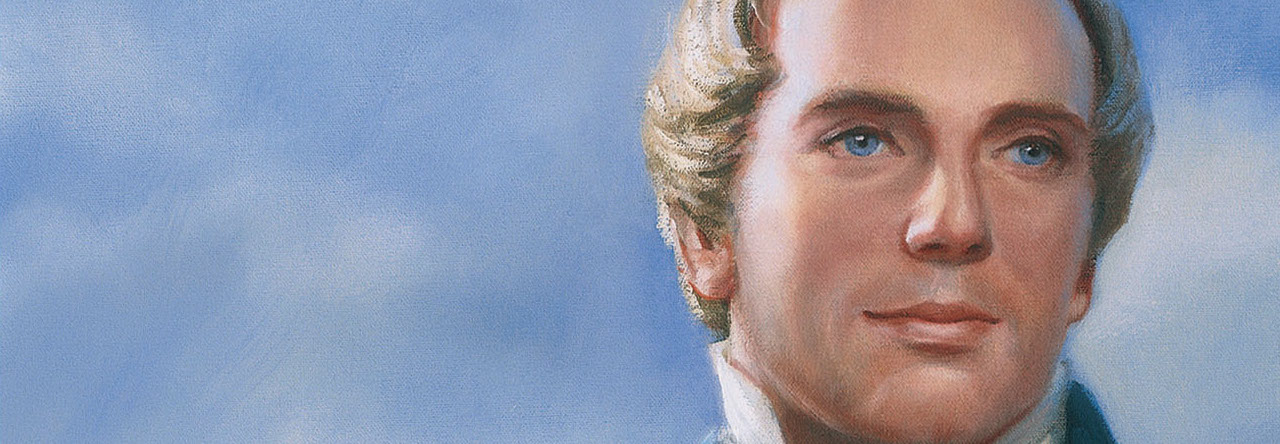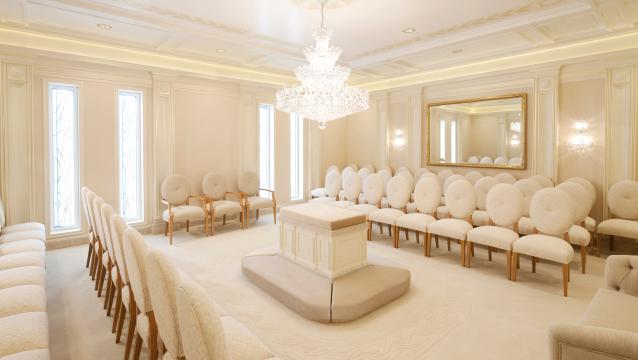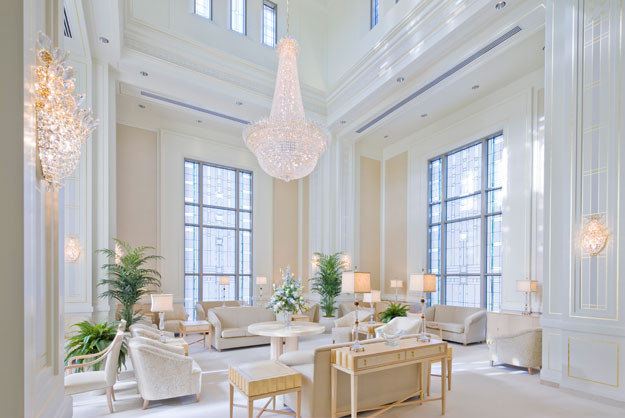The highest and noblest ordinance of the temple is the sealing of couples for eternity. This ordinance, the culmination of the New and Everlasting Covenant, is performed in special rooms that are adorned with mirrors on the walls facing each other, reflecting and re-reflecting each other forever. This represents our conviction that the marriages consecrated therein are eternal, farther than the couple can see or imagine in the mirrors. This particularity of temple design means that, in one real way, Latter-day Saint temples are bigger on the inside than they are on the outside.
When we enter the doors of these magnificent temples, we leave behind all the ugliness and worry of the world. We encounter the beauty and peace of the temple. Outside the temple, there are so many duties, distractions, and difficulties that we cannot be fully ourselves—which in other language is called being “in the closet.” Only within the temple can we put aside the constraints of the world and be more closely reunited with our Parents in heaven. This is the sense in which the structure of the temple is an “inside-out” closet.
Then, zooming out to a larger framework, we see also that mortality on earth is actually a closet experience itself! In the time between our pre-mortal existence and our resurrection, we are trapped within the limitations of mortality. We are apart from the presence of God. In the closet of this world, we can’t be all who we are intended to be. Our truest identity is as divine beings of eternal origin and infinite potential, but these identities cannot be fully expressed at this time. In time, we will each emerge from our chrysalis and become more manifest as the Offspring of God. The temple gives us a heavenly foretaste of that reality. It teaches us how to pass through the veil and come out of the closet of this world.
Accordingly, by planting a little piece of God’s celestial dwelling-place here on earth, the temple is a blurring of the boundary between earth and heaven. It is an ambiguous space that defies categorization. Noting that earth and heaven are interqueered with each other is the only way of grasping the reality that when you are outside of the Temple, you feel inside a closet, but when you are in a temple, you are out of the closet. (Indeed, God has a peculiar way of reversing our expectations: “the last shall be first, and the first shall be last,” 1 Nephi 13:42. Compare Matthew 19:30, Luke 13:30, and also another interesting parallel, “For everyone who exalts himself will be humbled, but he who humbles himself will be exalted,” Luke 18:14).
In Psalm 118, the Temple is a place where God surprises the world and frustrates the rigid categories of the “experts” who built it. Within its architecture is an amazing truth that God vindicates all those who don’t fit in. “The stone which the builders rejected has become the chief cornerstone” (Psalm 118:22, see my further analysis on this here). There are “experts” in Christianity that will be surprised when God elevates queer people to our rightful place. (For the threshold as an architectural embodiment of queerality, see my post on the threshold as the holiest place in the temple.)
The temple is a refuge from the world’s closets in so many ways. This is seen in the symbols of equity-among-diversity within the temple. At first, the universal wearing of white clothing might not be seen to represent diversity. But it does. What we should remember is that the clothing does nothing to change the actual individual. All the people in the Temple exhibit the same diversity that they did in the outside world—the only difference is that they now are all treated equally. From the president of the church down to a new convert, and from the richest among us to the poorest, we all wear the same thing. This is precious.
Furthermore, people of all genders attain a measure of equality not seen outside the temple. Even the living and the dead are treated equally in the temple, in that we ensure that no one is left out. This spirit of inclusiveness should never be forgotten as we labor in the world outside, fighting injustice and inequality. When we are in the temple, we should never forget all those who are suffering out in the world because they are not fully who they are intended to be, because they are trapped in the structures of homophobia, transphobia, racism, ableism, poverty, and so forth.
Temples are needed as a refuge now, but that will not always be true. There are examples of several signs in this dispensation that will pass away. Prophesies, speaking in tongues, and knowledge will be set aside; so when what is perfect comes, the partial will be set aside. But love never ends (1 Corinthians 13:8–10). I sense that the temples are another example of the signs of this dispensation that will pass away. No refuge from the closet will be needed in heaven, because all of heaven is a refuge from the closet of mortality. Perhaps this is why John the Revelator reports in his vision the New Jerusalem, “And I saw no temple therein: for the Lord God Almighty and the Lamb are the temple of it” (Revelation 21:22).
May our experience of freedom in the temple remind us to pray for the end of closets everywhere.



Pingback: The Stone which the builders rejected | Latter-day Thinking
Pingback: The Threshold as the Holiest Location of the Temple | Latter-day Thinking
Love reading this! Awesome writer!
LikeLike